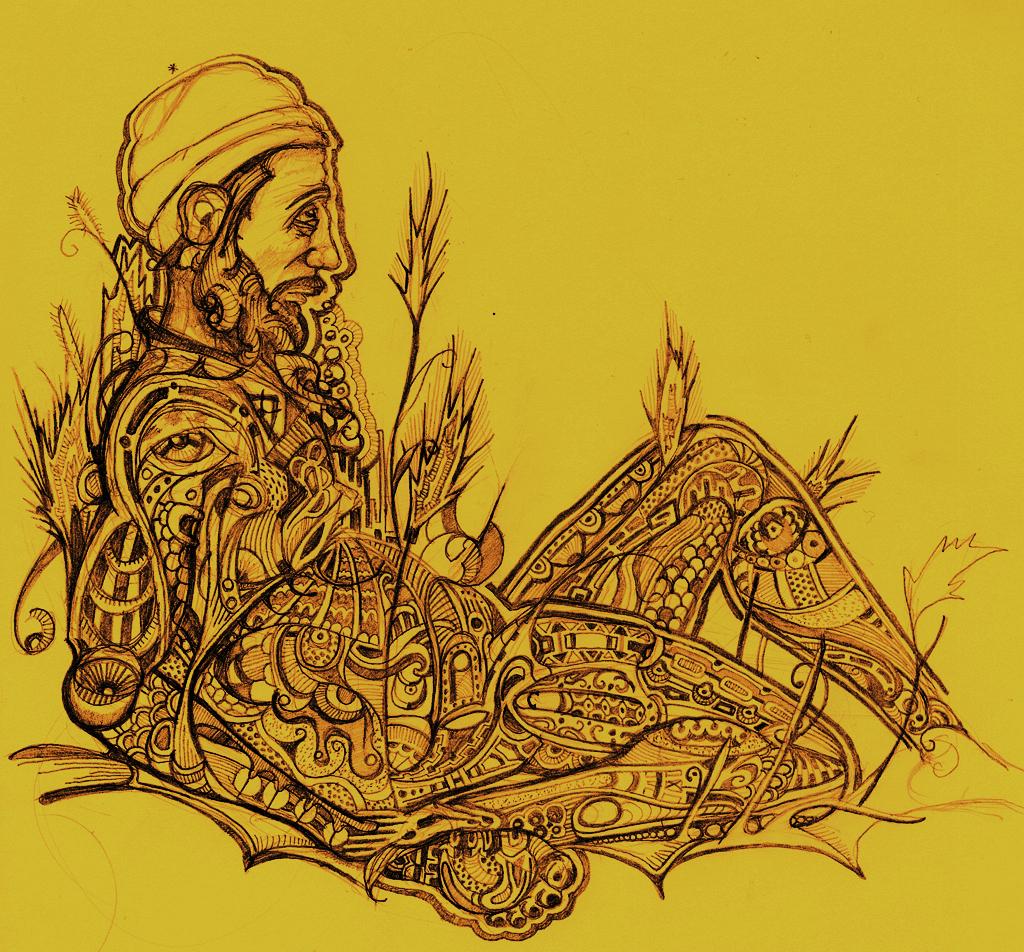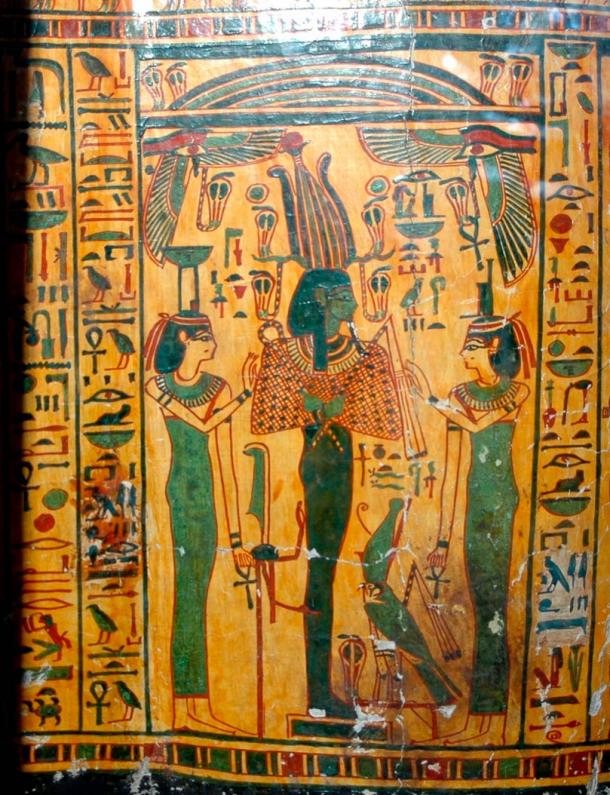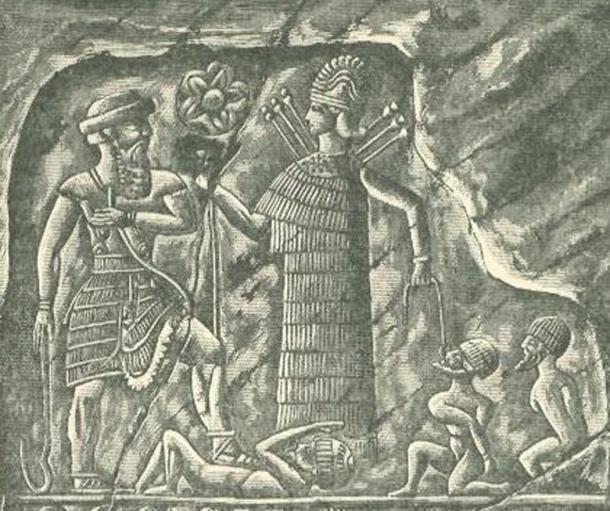
https://pbs.twimg.com/media/B6yfigBCIAI9nVu.jpg
This week's lecture was challenging for me. I've been exposed to ideas that helped me understand the degradation to water supplies, including through pollution of surface water and depletion of groundwater, destruction of living soil, destruction of ecosystems, and the simplification of the diet that comes through industrialized agriculture and consumption of processed foods. But I'm also semi-indoctrinated by a near-religious reverence for the agricultural cycle (and its odd subtheme of human sacrifice, if you really want to get into it). So I want to talk about hoarding, wealth, domestication, servitude, private property, standing armies, and pyramidal power structures. And maybe beer, perhaps the most seductive product of the granary of all. I will argue that relying on grain cultivation gave rise to banks (and thus usury and concentrated wealth independent of labor), invasion and conquest, bureaucracy, centralized government, the feudal class structure, slavery as an institution, industrialization, and that ultimately this way of life drove us to split the atom and inadvertently poison Ukraine (which has long been the bread basket of Eastern Europe). But for me this is something of a thought experiment.
Manna from Heaven

When the Israelites left Egypt in Exodus 16, they were leaving a civilization made rich by agriculture. As Gil Stein, Director of the Oriental Institute says, "The work at Edfu is important and innovative in that it finally allows us to examine ancient Egypt as an urban society, whose cities and towns housed bureaucrats, craft specialists, priests, and farmers. Nadine Moeller's discovery of silos and local administrative buildings shows us how these cities actually functioned as places where the agricultural wealth of the Nile valley was mobilized for the state. Grain as currency provided the sinews of power for the pharaoh" (Moeller, 2008). Since grain was a form of currency, silos were probably the first banks. In a hunter-gatherer society, wealth was difficult to hoard; but with the rise of agriculture, wealth could not only be stored up, it could be loaned at interest and accumulated without labor. Unfortunately, great wealth draws attention, and Egypt was conquered by the Greeks and then again by Rome, who needed its vast agricultural wealth to feed its city; it was the breadbasket of the Byzantine Empire for a time.

Wealth was not all that was hoarded however. Banks needed accounts kept, which probably gave rise to mathematics and writing, and ultimately libraries, where knowledge was hoarded. The ability of humanity to pass its accumulated knowledge from generation to generation may well be thanks to agriculture. It is also likely that calendars were first devised to time planting and harvest; but with the knowledge of time came worry for the future and an awareness of the inevitability of death, which may well have kicked off the Egyptian preoccupation with the afterlife and immortality. Wealth and death were so interlinked that Hades/Pluto was god of both the underworld and death in Greek and Roman civilizations. And after all, grain, the basis of wealth, grows from the ground, most lushly where blood has been spilled or dead matter has been plowed under. We'll talk about Osiris, Egyptian god of the Dead, in a second.
Something interesting happens when you hoard grain: it ferments. With the rise of agriculture came beer, which was used to pay Egyptian laborers and was considered a source of nutrition (Marks, 2018). Perhaps you could say that early civilization ran on beer. Egypt also cultivated the opium poppy, it must be said.

Meanwhile, during the exodus Moses kept his people fed with manna from Heaven. This could not be hoarded, because it would spoil in a day. The New Testament also cautioned against hoarding wealth, requiring that it be given to the poor. Hoarding is antithetical to faith. From the Book of Matthew 6:26: "Look at the birds of the air; they do not sow or reap or store away in barns, and yet your heavenly Father feeds them. Are you not much more valuable than they?" On the other hand, Jesus manifested loaves to feed his crowds of listeners and compared his body to bread, offering it as a sacrament. Both bread and wine are "transformed" by yeast, which could show the transformative effect of the Spirit on human consciousness. It's complicated. Let us say that symbolically speaking, transformed bread removes the stain of Original Sin, which invoked God's curse of agriculture onto humanity in the first place.
Osiris and the Hall of Judgment

https://www.ancient-origins.net/sites/default/files/styles/large/public/Outer-coffin-of-Taywheryt-depicting-Osiris.jpg?itok=kslnvaKh
Osiris, Egyptian god of the Underworld, was said to have taught humanity agriculture. He was also the symbolic father of the Pharoah, and represented the stability of the monarchy. In mythology his body was torn apart by his brother Set and thrown in a river, and he was reassembled and brought back to life by his wife, Isis. As an agricultural deity, he was torn apart on the threshing-room floor, and brought back to life with the flooding of the Nile. It is interesting that again the god of resurrection and grain is also the god who judges the soul after death. He was said to have taught humanity religion and morality (McDermott, 2019), but his greatest blessing is not food – it's immortality in the Western Land, granted only to those whose soul's heart weighs less than a feather. Interestingly, his sacrament was bread and beer. (Beer was also the only thing that could calm the homicidal fury of the lion-headed goddess Sekhmet, but that's for another time). So we could say that the god of agriculture founded a death cult, or alternatively that he spiritualized man's nature by granting immortality to the just. Either way, he certainly backed the centralized seat of power in the land.
Inanna, Goddess of Fertility and War

Inanna (also called Ishtar and Astarte) was a Mesopotamian goddess of agriculture (her symbol was a knot of reeds), ritual marriage/sex to bless the land with plenty, and war. She visited the Underworld, was killed by her sister, was resurrected by another god, and then sacrificed her husband (who was a shepherd) to descend there for half of the year (a reference to the seasons). She also relates to slavery; in the image above, she is presenting captives of war to the king. She has a vengeful nature, lusts for power, and . . . likes her field plowed. Battle became known as the Dance of Inanna. Here the goddess of vegetation is not the goddess of death, she is the Queen of Heaven who tried to *conquer* the underworld and in so doing inadvertently brought winter to the Earth. This is a drastically different image than the more lugubrious story of Isis and Osiris, but the theme of the Earth's vegetation ceasing to grow when the male and female principles are separated by death is familiar. However, it is so dissimilar from the story of Christ that they don't even have fermented beverages in common. This early image of agriculture is barely civilized; in fact, one version of this figure fell in love with the Wild Man, Gilgamesh. Gilgamesh, representing the hunter-gatherer culture, rejected the early queen of civilization and agriculture, so she sent the Bull of Heaven to smite him - and the Wild Man won! Times have changed.
The Rape of Persephone

A more depressing version of the journey of the fertility-bestowing goddess to the Underworld is the abduction of Persephone, the goddess of Spring. She was the daughter of the Greek goddess of the grain, Ceres, and was taken by Hades, the god of the dead. After Ceres in her grief caused all growth and reproduction on the Earth to cease, through negotiations she had her daughter returned to her for half the year, which is the time when crops can grow again. This mythological link between agriculture, captivity and death is quite blatant. In this mythological universe the wildness of fermentation is given to Dionysos, who reigned in the winter, after the harvest. In some stories, Persephone is the mother of Dionysos. Dionysos, like Osiris, was torn to pieces, but unlike him, was also consumed and then resurrected from his heart. The human sacrifice was literalized by his followers, the Maenads, who were said to go mad and tear men to pieces in a frenzy. A lot could be read into this pair of tales; the fact that they have been separated could be a reference to the split between nomadic hunters and gatherers (Dionysos was a wanderer) from sedentary farmers. Note that where beer and bread have been staples of civilization's domestication under a centralized power, wine recalls wildness, independence and lawlessness.
Hunters of the Granary

It's interesting that while dogs are companions of hunters, cats are companions are farmers – they kill pests that eat the grain stores. These animals are considered spooky – probably because they are silent and hunt nocturnally - and are mythologically ambiguous, including coyotes, owls and foxes. These creatures are wild or only partially domesticated and can be tricksters.
Bread and Circuses 

https://cdn1.thr.com/sites/default/files/2017/05/gladiator_-_h_-_2000.jpg
From the Romans to the Soviets, if you want to control a mob, you do it through its stomach. An army also marches on its stomach. If you want people who don't think for themselves, feed them the same thing every day, provide it for them from storehouses, and make them earn it through repetitive drudgery (farming and milling). If nobility (or the State) owns the land that serfs farm for them, you can tax the farmers to feed the city folk and nobles, you can treat them as property, recruit them as soldiers, and afflict them with famine if they get unruly (you just get armed men to take the entire harvest, as the Soviets did to the Ukrainians during the Holodomor). You can also stop them from entering the forests to find food, reserving these as game preserves for the privileged. The folk hero reply to this state of affairs? Robin Hood. People who didn't want to be used this way became outlaws. But the reply to that is the Spectacle: punishment as a sport, recruiting the peasants to the side of the law through various bloody exhibitions.
Blood and Soil
https://encrypted-tbn0.gstatic.com/images?q=tbn%3AANd9GcSr9DkcH1-pgTVgQ7RXCD4KPFBautl7L8x6ttki12yG-MFMnW6n
Hunger, though, gives rise to fascism. After the harsh reprisals against Germany following the Great War, the Nazis rose to power. They conquered Europe and used slave labor to farm. WWII led to the development of the atomic bomb, which led to nuclear power, which led to Chernobyl and poisoned the earth. Meanwhile, greater and greater wealth is concentrated in fewer and fewer hands. The earth is far more productive with far fewer people farming it. We no longer know where our food comes from, and in the age of the machine we are nearly continuous with our devices. Consciousness was once felt as continuous with all living things for nomadic hunter-gatherers; it is now continuous with radiation of various kinds (radio and television waves to wi-fi).
Marks, T. (2018). A sip of history: ancient Egyptian beer. Retrieved from https://blog.britishmuseum.org/a-sip-of-history-ancient-egyptian-beer/ (Links to an external site.)
McDermott, A. (2019). The outstanding story of Osiris: his myths, symbols and significance in ancient Egypt. Retrieved from https://www.ancient-origins.net/human-origins-religions/story-osiris-how-first-ruler-egypt-became-god-underworld-008953 (Links to an external site.)
Moeller, N. (2008, July 1). Archaeologists find silos and administration center from early Egyptian city. Uchigaco News. Retrieved from https://news.uchicago.edu/story/archaeologists-find-silos-and-administration-center-early-egyptian-city (Links to an external site.)
Edited by Oluwa Jackson on Mar 11 at 5:01pm
No comments:
Post a Comment